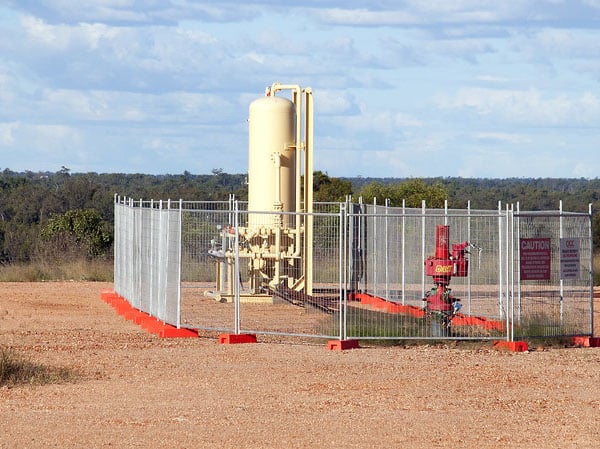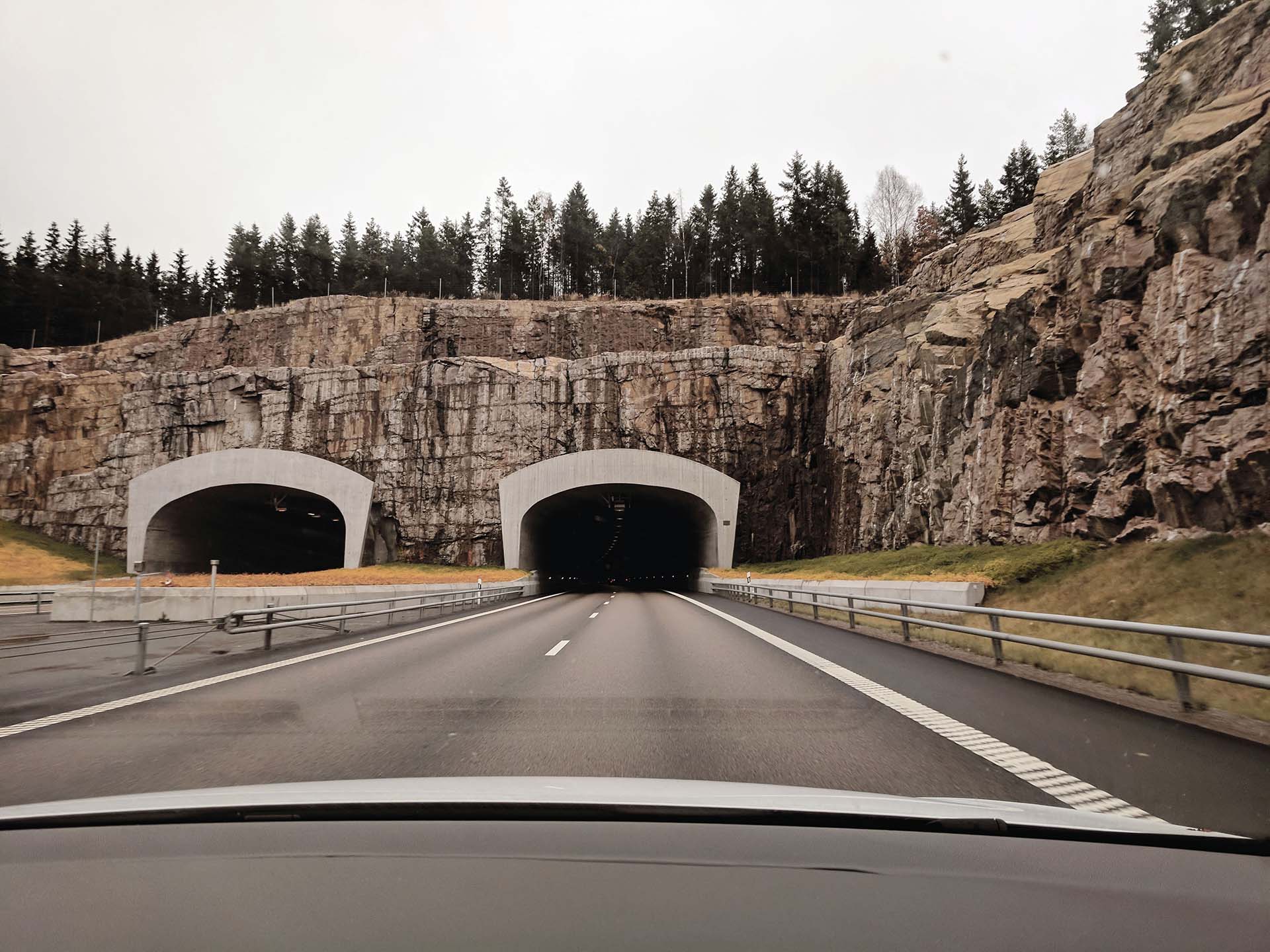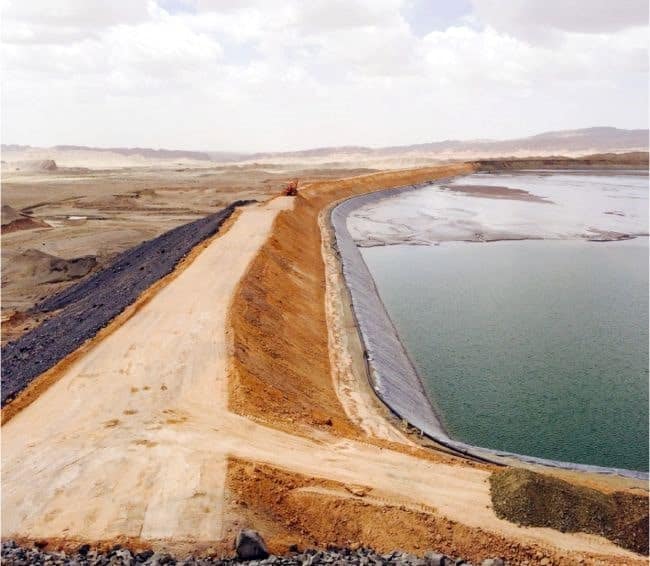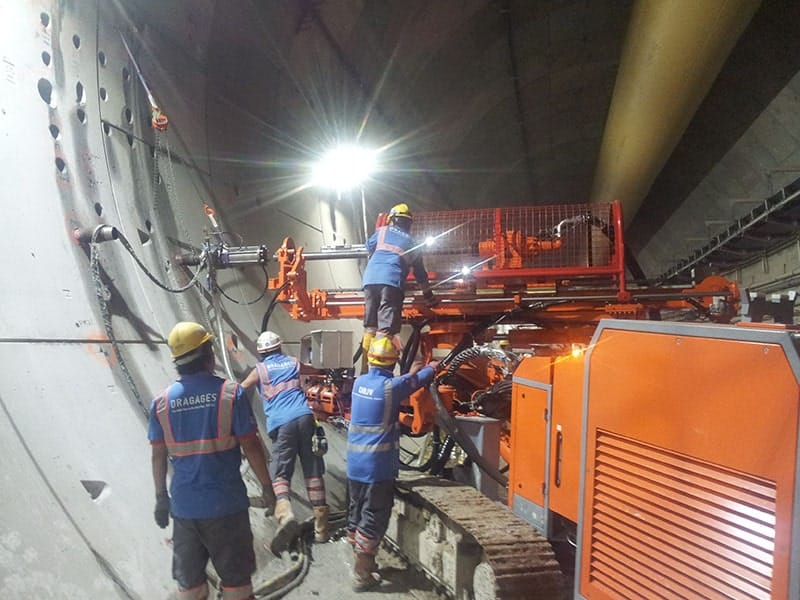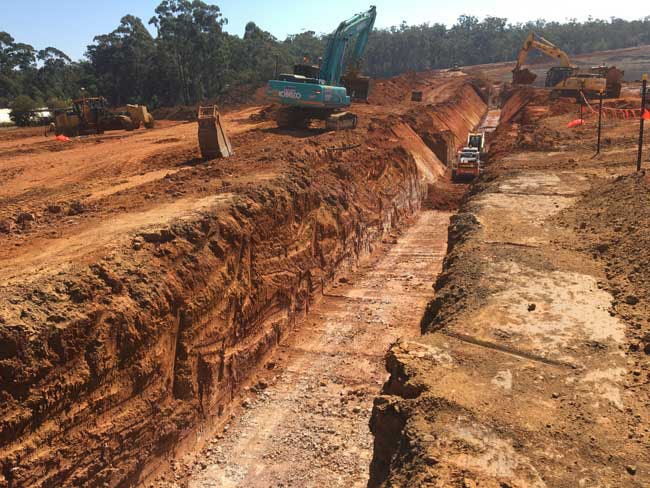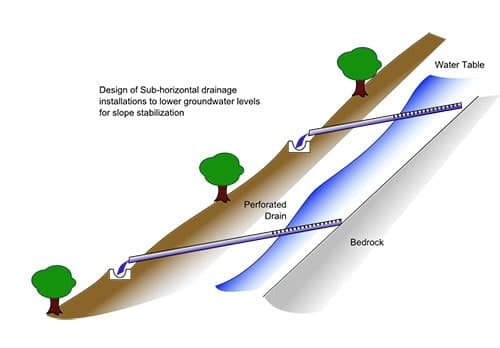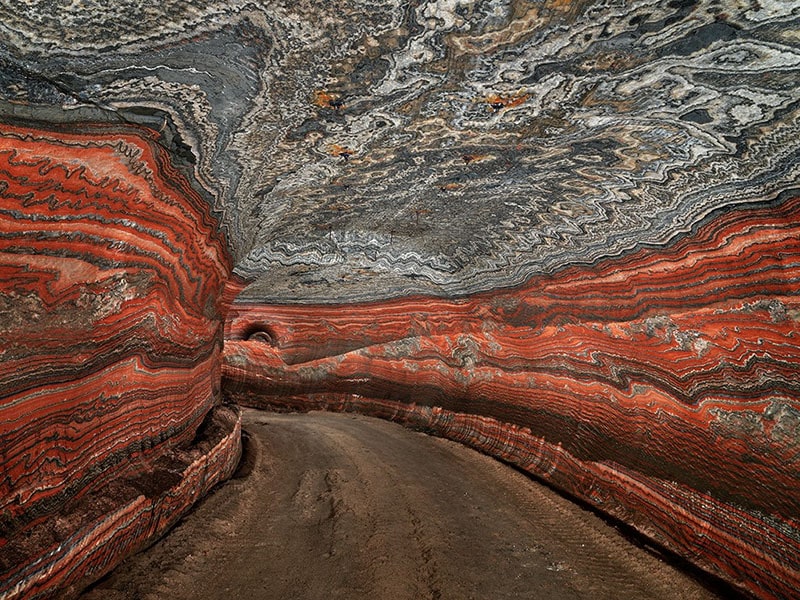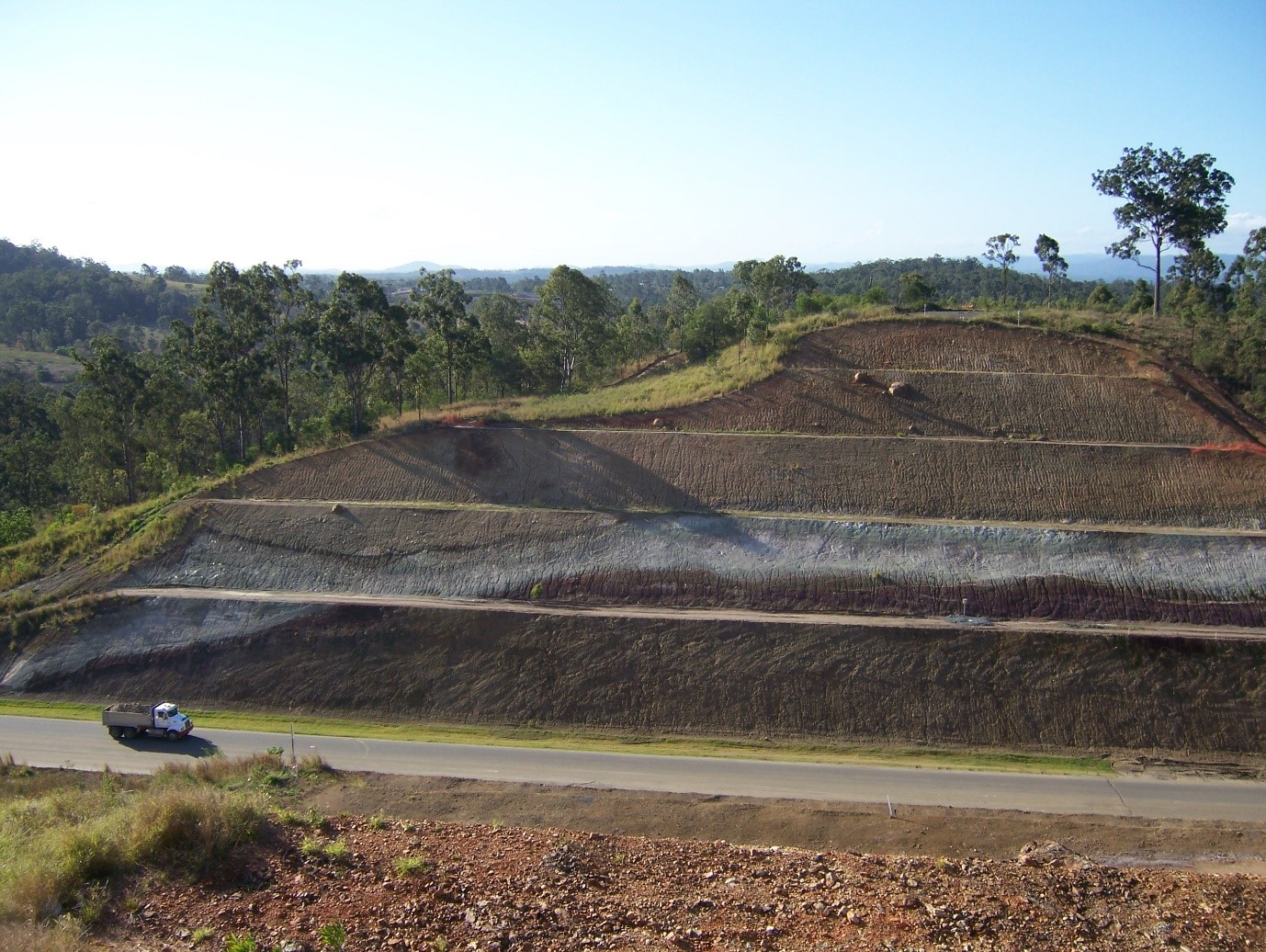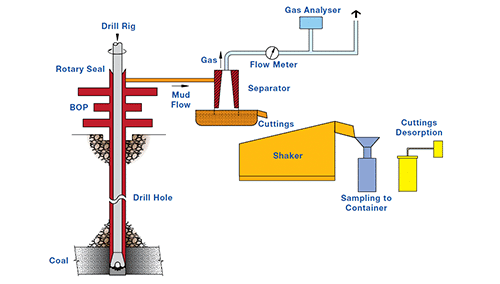The method is only appropriate where blast damage has not fractured the near surface rock.
Surface stress measurement is readily achieved by smoothing the rock surface with a diamond wheel and gluing a strain gauge rosette and temperature sensor to it. Once the temperature and strain readings have stabilised, the area is overcored to relieve the stress. This is conveniently done using a concrete core cutter. After overcoring, the strain gauges and temperature sensors are reconnected and the temperature is allowed to stabilise. The strain difference between the pre-overcore and the post-overcore state is then measured and thermal effects subtracted. Using rock mechanical properties obtained from the core, the surface rock stress may be calculated.
This technique has been used in excavations and within tunnels. The most notable of these is the Bogong Power project in the Snowy Mountains, where four surface stresses were measured around the periphery of a circular tunnel created by a tunnel boring machine in granodiorite. These surface stress values permitted the calculation of the overall far field stress. We believe that this tunnel was the world’s largest overcore pilot hole!
The surface stress is frequently a more important measurement than the virgin stress at depth as, combined with rock strength, it provides an immediate estimate of the opening stability.




